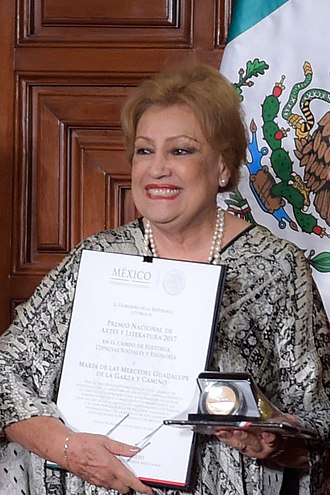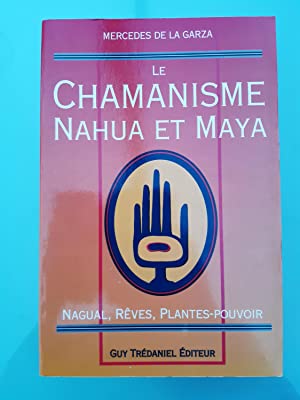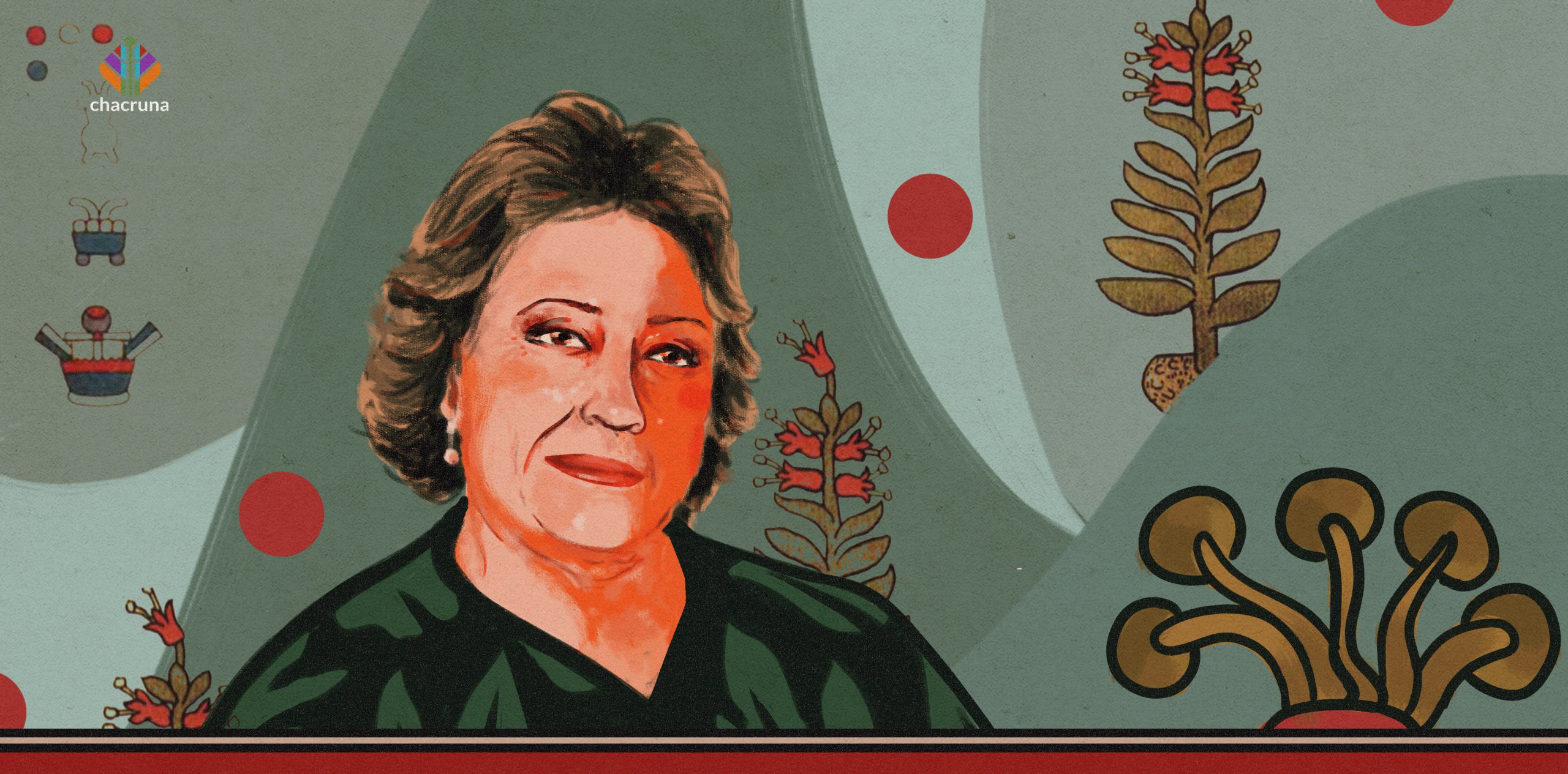- Mazatec Shamanic Knowledge and Psilocybin Mushrooms - February 10, 2022
- Dream and Ecstasy in Mesoamerican Worldview: An Interview with Mercedes de la Garza - January 27, 2022
- María Sabina, Mushrooms, and Colonial Extractivism - May 27, 2021

The following is an interview with Dr. Mercedes de la Garza, professor emeritus of the National Autonomous University of Mexico. She is one of the most recognized researchers on shamanism and the ritual uses of plants and mushrooms with psychoactive properties. Her research constitutes one of the most valuable contributions to Indigenous plant knowledge most broadly, due to its methodology and the study of primary sources such as epigraphic texts, codices, sculptures, and manuscript, together with ethnographic works and interviews.
This interview offers a general overview of her research. I inquired about the reasons that prompted her to conduct this path-breaking research. I sought her opinion about the contributions made by other women. Finally I asked for her advice to new generations of researchers dedicated to the study of the ritualistic use of plants and mushrooms with psychoactive properties.
This interview serves as a cordial invitation to our readers to come and learn first-hand about the work of Dr. Mercedes de la Garza. She is one of the pioneers in the Global South. The interview comprises ten questions focused on specific issues within her vast work.

1. How did you become interested in researching sacred and psychoactive plants’ ritual and therapeutic uses?
I am a historian of religions. Among my topics on Nahuatl (Aztec) and Mayan religions, I decided one day (around 1985) to investigate shamanism from pre-Hispanic times until today. I relied on several sources: plastic works and other pre-Hispanic vestiges, epigraphic readings of Mayan hieroglyphic writing, codices, pre-Hispanic (Maya) and colonial; texts written in colonial times, by Indigenous people and Spaniards; and research conducted by anthropologists in present-day Indigenous Nahua and Maya communities. I also conducted some interviews with shamans from both cultures.
And in the course of the research, I came across sacred plants with psychoactive powers. From pre-Hispanic times, the Pre-classical Period (1800 B.C. to 300 A.D.) until today, shamans have used it. The most ancient vestiges of Mesoamerican shamanism are precisely those that reveal the use of plants and mushrooms. Both, by the representations of shamans in ecstasy or trance, as well as of the plants themselves.
2. How have you approached your research, what kind of methodology was necessary to carry it out?
The central object of my research is shamanism, with all that it implies: the characters, their roles in the community of doctors, diviners, counsellors, dreams, initiations, sacred stones, healing and psychoactive plants and mushrooms, which allow the externalization of the soul towards other dimensions of reality, according to their conception of the world. The temporal scope that I cover is from pre-Hispanic times to today.
Shamans are ritual specialists recognized as having received a “gift” from the deities and chosen by them in their dreams. They act individually and perform private rites.
“MY METHODOLOGY IS THE HISTORY OF RELIGIONS, WHICH CONSIDERS THE RELIGIOUS PHENOMENON AS A HISTORICAL CREATION, AND APPROACHES IT OBJECTIVELY.”
My methodology is the history of religions, which considers the religious phenomenon as a historical creation, and approaches it objectively. It is grounded in the comparative analysis of the data provided by different sources to find the meaning of the religious phenomenon and to understand it.
3. You are a professional researcher in history; could you explain the importance of the study and analysis of primary sources?
Any historical research has to be based on primary sources. It is necessary to carry out a hermeneutic study of them to understand them and not simply collect information but interpret it with attention to historical context. However, it is also essential to keep up-to-date with the progress of research by other authors when it supports or clarifies an interpretation or provides new data. Likewise, when the subject requires it, it is necessary to appeal to data provided by other disciplines, both humanistic and scientific.

Discover the Indigenous Reciprocity Initiative of the Americas
4. As a woman dedicated to science, did you experience any difficulty, obstacle, or discrimination during your research process?
I have not been discriminated against as a woman, but there are always anti-feminist or competing male critics.
5. Could you explain women’s main contributions to research with sacred plants and psychedelics?
I can mention the following: in the United States, Marlene Dobkin de Ríos, in 1974, was the first to discover data that spoke of the use of these plants among the Mayas of the Classic Period. She was harshly criticized by several male researchers locked in their dogmas. I studied her proposal, considered it valid, and quoted her, recognizing her contribution.
Another outstanding anthropologist dedicated to shamanism and sacred plants is Antonella Fagetti, from the Benemérita Universidad Autónoma de Puebla, Mexico. She and I, along with several other researchers, are now working on a project on psilocybin.
Also dedicated to studying sacred plants is María Bencioli, who looks at the use of peyote. Lilián González, has delved into the use of tobacco. And also María Gabriela Garrett Ríos and María de Lourdes Baez Cubero, have published their research on the Santa Rosa, the Indigenous name for marijuana.
6. What do you consider your most significant contribution to the study of sacred plants with psychoactive properties?
My book Sueño y éxtasis. Visión chamánica de los nahuas y los mayas, Mexico, Instituto de Investigaciones Filológicas and Fondo de Cultura Económica, 2012.
In this book, I talk mainly about sacred plants in shamanism. But I include a table of all those I found mentioned in the sources. With their scientific names and their names in the different languages, as well as their primary uses.
In 1990, I published at the Universidad Nacional Autónoma de México the book Sueño y alucinación en el mundo náhuatl y maya (Dream and Hallucination in the Nahua and Mayan world), a predecessor of the previous one, which was translated into French and published in Paris under the name of Le Chamanisme nahua et maya.

7. Based on your experience, how would it be possible to make a kind of history that recognizes the work done by women in the research on sacred plants and psychedelics?
Perhaps by the initiative of a female historian, or perhaps a male historian respectful of women’s contributions, of which there are some.
8. What is the role of Mexican researchers and institutions in the context of the so-called psychedelic renaissance?
I don’t know what the so-called “psychedelic renaissance” is.
9. What would you recommend to the new generations of researchers dedicated to studying the ritual and therapeutic uses of sacred plants with psychoactive properties?
They do not leave their subject of study to live experiences with sacred plants, losing objectivity. It has happened to several scholars, and I have friends who know a lot about sacred plants but have not written anything because they have strayed down that path.
10. What is your opinion about the initiatives presented to regulate and decriminalize sacred and psychedelic plants in Mexico?
I am not aware of such initiatives.
This piece was originally published on Chacruna Latinoamérica, “Sueño y éxtasis en el mundo Mesoamericano: Entrevista a la Dra. Mercedes de la Garza.”
This piece was translated from its original Portuguese by John Milton
Art by Karina Alvarez.
Join us for our next conference!
Take a minute to browse our stock:
Did you enjoy reading this article?
Please support Chacruna's work by donating to us. We are an independent organization and we offer free education and advocacy for psychedelic plant medicines. We are a team of dedicated volunteers!
Can you help Chacruna advance cultural understanding around these substances?

















